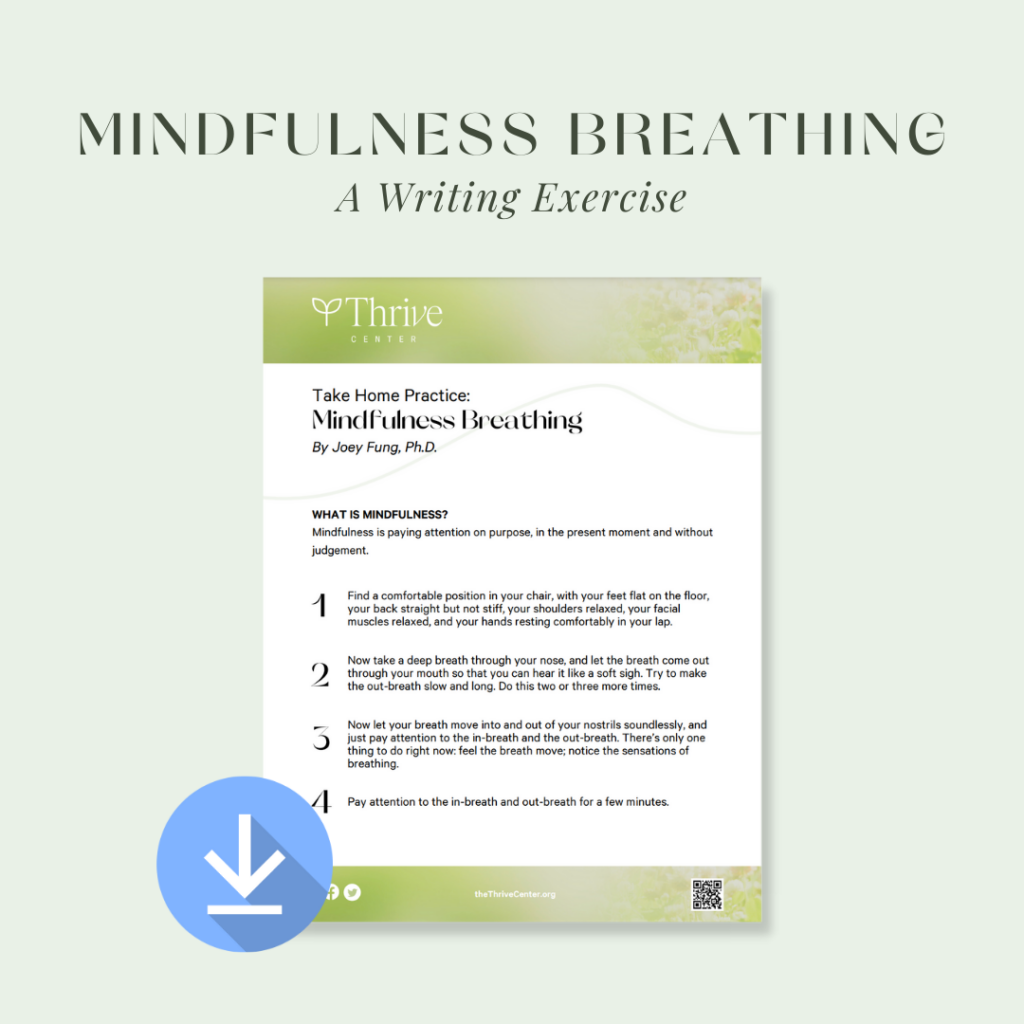Mindfulness is paying attention on purpose, in the present moment and without judgement. Mindfulness can help us check in with our bodies and manage our emotions. When we infuse mindfulness with breathing, we gain awareness of the self and also of the things around us. Breathing is natural and gives us life. Our bodies and minds rely on breathing. It can become an effective tool to relieve anxiety, as well as aid sleep and digestion. We all benefit from mindful breathing.
We recommend doing this simple exercise twice a day, particularly in the morning when you wake up and at night before you to go to bed. If you can’t do this practice twice a day, that’s okay! Do this practice whenever you can. If helpful, set up daily reminders on your phone for a particular time of day for this practice.
Timing: 3-5 minutes
How To:
Find in a quiet place. Turn off or silence any technology around you. Whether you open or close your eyes, allow yourself to be present and not focus on anything else. If you feel distressed as you’re doing this exercise, stop. Go back to normal breathing, and the slowly start over when you’re ready.
Step 1
Sit on your chair in an upright, but comfortable position—feet flat on the floor, shoulders and facial muscles relaxed, and hands resting comfortably on your lap.
Step 2
Take a deep breath through your nose, and then let the breath come out as a soft sigh through your mouth. Try to make the out-breath slow and long. Do these two or three more times.
Step 3
Now let your breath move in and out of your nostrils soundlessly. Pay attention to the in-breath and out-breath. Just feel the breath move, noticing the sensations of breathing. Notice, but do not judge any thoughts that may come up. Return your attention to the breathe.
Step 4
Continue this way, paying attention to the in-breath and out-breath for a few minutes.

Note: This exercise was adapted from associate professor of psychology at Fuller Theological Seminary, Joey Fung’s mindfulness breathing practice. Download this practice here.
Continue Exploring

Emotions
Grief and Mindfulness: How to Manage Your Emotions
Dr. Joey Fung discusses the myths of grief, offering 3 ways mindfulness can help us manage our emotions during times of grief.

Agility
A Practice: The Five A’s for Agility in the Face of Change
Finding joy requires practice. Learn how you can be agile and experience more joy in your daily life through our 5-step process.

Resilience
A Practice: The Five R’s of Resilience and Recovery
Cynthia Eriksson's psychological and theological framework points to 5 self-care practices to developing resilience and recovery.
Subscribe to our newsletter and get our Thrive Practices for Spiritual Health PDF!
You Got It!
